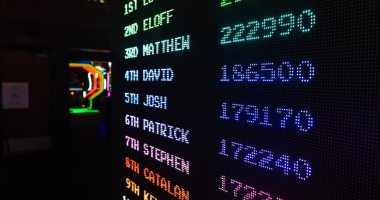Decentralized applications (DApps) are gaining significant traction in the cryptocurrency space. These applications allow developers to create and deploy applications that run on a decentralized network, eliminating the need for intermediaries like traditional financial institutions. However, building a DApp that runs across multiple blockchains presents significant technical challenges. This is where Moonbeam, the Ethereum-compatible smart contract platform, comes in. In this article, we will explore why Moonbeam is the platform of choice for cross-chain DApps. Suppose you are searching for a top-notch platform to trade your crypto assets, use the bitcoin-billionaire platform for this.
Cross-Chain Interoperability
One of the biggest challenges facing developers of cross-chain DApps is interoperability. Blockchains are essentially isolated networks, and communication between them is difficult. Developers must overcome significant technical barriers to build applications that interact across multiple blockchains. Moonbeam addresses this challenge through its interoperability features.
Moonbeam uses the Polkadot network to facilitate interoperability between different blockchains. Polkadot is a multi-chain network that enables different blockchains to communicate with each other. This means that developers can build applications on Moonbeam that can interact with other blockchains in the Polkadot network. This interoperability makes it possible to build truly decentralized applications that can leverage the strengths of multiple blockchains.
Ethereum Compatibility
Ethereum is the most popular blockchain for building DApps. However, its network is facing significant scalability challenges. This has led to congestion and high gas fees, making it difficult for developers to build and deploy DApps on the network. Moonbeam is built on top of the Substrate framework and is fully Ethereum-compatible. This means that developers can use the Ethereum tooling they are familiar with to build and deploy DApps on Moonbeam. Additionally, Moonbeam provides a more scalable and cost-effective alternative to the Ethereum network.
Developer-Friendly Environment
Moonbeam is designed to be a developer-friendly environment. It provides a familiar development environment for Ethereum developers and has a low learning curve. This makes it easy for developers to get started building DApps on the platform. Additionally, Moonbeam provides a suite of tools and services that simplify the development process, including:
- Moonbase Alpha: A test network for developers to test and deploy their DApps.
- Moonbeam Truffle Box: A pre-configured development environment that provides a starting point for building DApps on Moonbeam.
- Moonbeam Studio: An integrated development environment (IDE) that provides a streamlined development experience.
Security and Reliability
Security is a critical consideration for any decentralized application. Moonbeam is built with security in mind and has undergone rigorous testing to ensure the platform is secure and reliable. Moonbeam’s consensus mechanism is based on the Proof-of-Stake (PoS) protocol, which is more energy-efficient and secure than the Proof-of-Work (PoW) protocol used by Ethereum. Additionally, Moonbeam uses the Substrate framework, which has a proven track record of security and reliability.
Conclusion
In summary, Moonbeam is the platform of choice for cross-chain DApps due to its interoperability, Ethereum compatibility, developer-friendly environment, and security and reliability. These features make it possible for developers to build truly decentralized applications that can leverage the strengths of multiple blockchains. Moonbeam is poised to become a leader in the DApp space, and developers who choose to build on the platform will have access to a robust and scalable ecosystem.
Bob Andrews is a content editor for Landscape Insight, With a background in journalism, Bob brings a unique perspective to his role as he oversees the creation and publication of a wide range of content, including articles, podcasts, and videos. You can reach Bob at – [email protected] or by Our website Contact Us Page.








